Saturday 26th February 2022
7:30pm
St Andrew's Church
Cheadle Hulme
SK8 5ET
***
Clarinet: Seb Marshall | Conductor: Alex Robinson
Proceeds to support
Stockport Amnesty Group
***
Programme:
Jean Sibelius (1865-1957)
Valse Triste
1904
Wolfgang Mozart (1756-1791)
Concerto for Clarinet in A major
1791
INTERVAL
Felix Mendelssohn-Bartoldy (1809-1847)
Symphony No. 4 'Italian'
1833
Seb Marshall Clarinet
Seb Marshall is a freelance musician based in Manchester who trained as a clarinettist at the Royal Northern College of Music (RNCM). He has appeared with the Hallé in Bridgewater Hall and the Netherlands Wind Ensemble in Concertgebouw, and has completed projects with Manchester Camerata. He is the clarinettist in professional chamber group The Tempest Ensemble, and he also regularly plays with choral societies, at music festivals, weddings, and scratch projects. He has a full schedule of peripatetic teaching of clarinet, saxophone, flute, recorder, and music theory.
While attending RNCM, Seb was regularly selected for the most prestigious projects; in his second year he played principal clarinet with the Symphony Orchestra in a concert including Stravinsky’s Firebird and Tchaikovsky’s Violin Concerto, and in his first year he played with the New Ensemble in a concert of works by George Benjamin in Wigmore Hall. Alongside clarinet playing, Seb is regularly employed as a conductor.
He is currently the Musical Director of the Warrington Musical Society, an amateur choir based near Manchester, and Hallmark of Harmony, a multi-award-winning barbershop chorus. He also works with youth orchestras and outreach schemes, including Warrington Youth Orchestra, Bradford Music and Arts Service, and Street Orchestra Live.
During lockdown, Seb’s Zoom projects have included leading choir rehearsals, playing in masterclasses, and virtual orchestras. His choral arrangements have been performed by virtual choirs, and he gave several livestreamed concerts.
In his spare time he enjoys socialising, watching movies, cooking, and watching dog videos.
Alex Robinson graduated from the University of Manchester with a first class degree in Music (MusB) in 2016 and the Royal Northern College of Music with an MMus in Performance (Conducting) at Distinction level in 2018.
He studied under the student conductor program at Manchester University with Mark Heron & Justin Doyle (RIAS Kammerchor) and later with Clark Rundell at the RNCM. He has also taken part in masterclasses with Sir Mark Elder, Johannes Schlaefli, James Lowe & Alim Shakh.
Alex has recently worked with the BBC Philharmonic, North West Contemporary Music Ensemble ‘Psappha’, Haffner Orchestra, Allegra Festival Orchestra (featuring members of the Sofia Philharmonic), Sheffield Philharmonic, Endcliffe Symphony Orchestra, Stockport Symphony Orchestra, Mayson Orchestra, and members of the Manchester Camerata. He is the principal conductor of the Amaretti Chamber Orchestra, Furness Bach Choir, Rotherham Symphony Orchestra and works regularly with Nottingham Youth Orchestra.
He has been assistant conductor to Sir Mark Elder (Hallé Orchestra), Sir Andrew Davies (Royal Liverpool Philharmonic), Nicholas Collon & Juanjo Mena (BBC Philharmonic). Alex was also the Assistant conductor for Heritage Opera and the BBC Philharmonic’s premiere of Alan William’s ‘The Arsonists’.
He has worked closely with renowned composer Harrison Birtwistle for the NewMusicNorthWest Festival in 2016, performing his ‘Silbury Air’ at the University of Manchester. In 2017 he worked with Samson Young on his five part radio drama series ‘One of Two Stories or Both’ for Manchester International Festival (MIF2017) which was broadcast live on Unity Radio 22.1fm and subsequently appeared on BBC iPlayer.
He will be participating in the Spokane Symphony Orchestra Conductor Fellowship in April.
Alex Robinson Conductor
Jean Sibelius (1865-1957)
Valse Triste, written in 1904
***
Originally part of the incidental music Sibelius composed for the play Kuolema (or 'Death' in English), Valse Triste or 'Sad Waltz' instantly became a very popular piece in its own right. The work is programmatic - the notes from the production of the play are as follows:
"It is night. The son, who has been watching beside the bedside of his sick mother, has fallen asleep from sheer weariness, Gradually a ruddy light is diffused through the room: there is a sound of distant music: the glow and the music steal nearer until the strains of a valse melody float distantly to our ears. The sleeping mother awakens, rises from her bed and, in her long white garment, which takes the semblance of a ball dress, begins to move silently and slowly to and fro. She waves her hands and beckons in time to the music, as though she were summoning a crowd of invisible guests. And now they appear, these strange visionary couples, turning and gliding to an unearthly valse rhythm. The dying woman mingles with the dancers; she strives to make them look into her eyes, but the shadowy guests one and all avoid her glance. Then she seems to sink exhausted on her bed and the music breaks off. Presently she gathers all her strength and invokes the dance once more, with more energetic gestures than before. Back come the shadowy dancers, gyrating in a wild, mad rhythm. The weird gaiety reaches a climax; there is a knock at the door, which flies wide open; the mother utters a despairing cry; the spectral guests vanish; the music dies away. Death stands on the threshold."
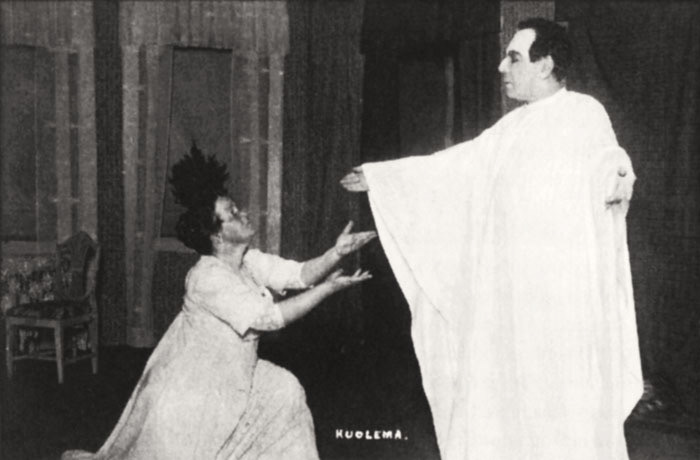
Death arrives to claim Paavali’s Mother to the accompaniment of Sibelius’s Valse triste. The 1911 performance of Arvid Järnefelt’s Kuolema at the Finnish National Theatre, with Axel Ahlberg as Death and Katri Rautio as the Mother.
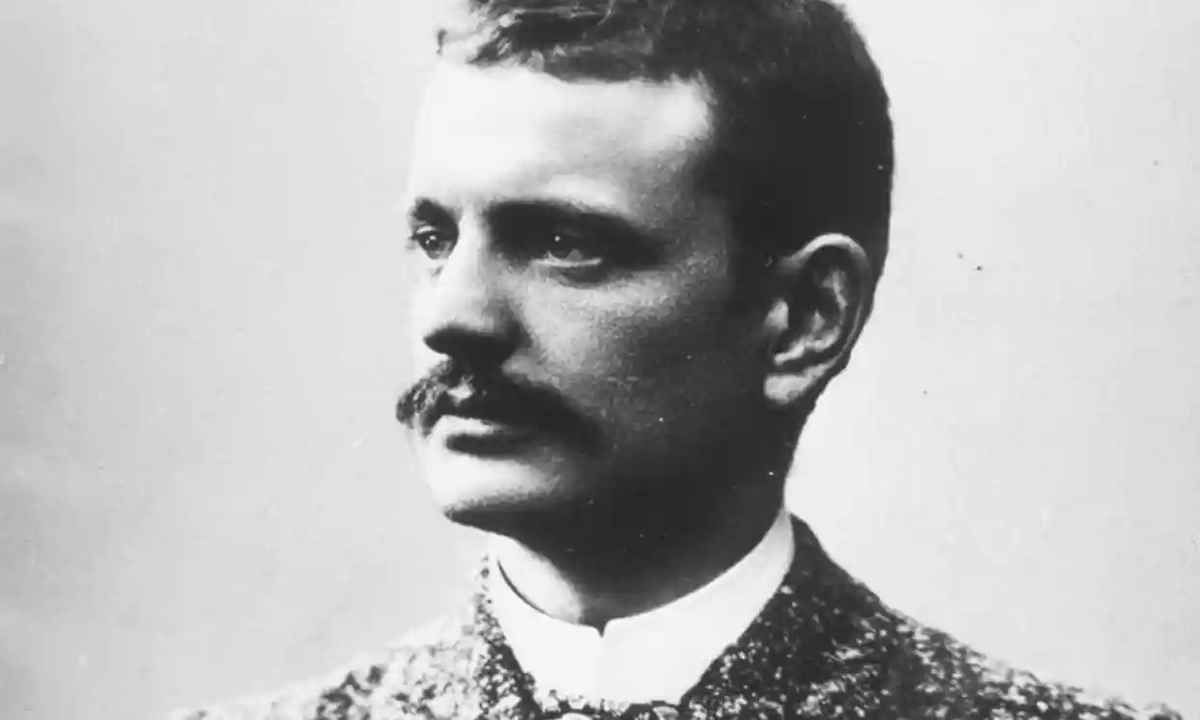
Jean Sibelius pictured in 1905 during his visit to Liverpool for the premiere of his Symphony No. 1
Wolfgang Mozart (1756-1791)
Concerto for Clarinet in A major, written in 1791
***
The Clarinet Concerto, along with the Requiem and the Little Masonic Cantata, were the last works Mozart composed before his death. Along with his other late works they form a kind of last will and testament - they represent Mozart, in contrast to his physical health, at the height of his compositional powers.
The concerto was written for the virtuoso Anton Stadler. Stadler was a virtuoso on a variety of instruments from the clarinet family including the Basset Horn (the instruments used in Mozart's Requiem and the Masonic Funeral Music). Mozart had originally intended to write the concerto for this instrument however Mozart later became convinced that it would be more convincing if it were played on a clarinet. Though the instrument chosen may not have been the Clarinet, but its closely related cousin, the Basset Clarinet. Although quite similar in register to the modern Clarinet, the Basset Clarinet has a few extra low notes and a slightly beefier tone quality. It is common practice nowadays however to perform the work on the much more popular Clarinet.
Following his work on the concerto with Stadler, Mozart also took Stadler with him to tour his last opera La Clemenza di Tito, wherein he composed a number of beautiful arias featuring a very prominent and virtuosic solo clarinet part.
The work is in three movements, beginning with a rather gentle, lilting Allegro in a broad Concerto-Sonata Form. The Second Movement is a very simple yet profoundly beautiful Adagio and is extremely well known. Lastly, Mozart gives us a rather fun, boisterous 6/8 time finale complete with light heartedness and an incredibly stormy passage in the centre of the movement.

Anton Stadler

Wolfgang Mozart
Felix Mendelssohn-Bartoldy (1809-1847)
Symphony No. 4 'Italian', written in 1833
***
Perhaps inspired by Goethe's 'Italienische Reise' in 1817, and other similar 'Grand Tour' expeditions, Felix was eager to travel to Italy following his visit to Scotland. He arrived in 1829 and wrote enthusiastically about his experiences so far in his letter of 1830 to his parents:
"Italy at last! And what I have all my life considered as the greatest possible felicity is now begun, and I am basking in it."
An enthusiastic artist as well as a composer, Mendelssohn frequently sketched what he saw in Italy. Perhaps his most well known sketch was of the Spanish Steps in Rome. He was struck by the spectacle of empires in decline, ancient ruins and crumbling palaces surrounding him. Yet despite this he felt something inspirational about their endurance. This must have been an enormously powerful moment for Mendelssohn, the decaying ancient empire in parallel with Napoleon's shattered dreams of an heroic empire only a decade earlier.
Mendelssohn set to work feverishly, composing his Italian Symphony whilst on his travels. His pen blazed with a white hot inspiration which can be felt from the moment the work begins. We are thrown into the action with fluttering pigeons, and a melody full of spirit and energy - youthful and full of vigour. He couples this with a more subdued but equally sunny second theme which bounces along effortlessly. This then gives way to a military development section on an epic scale. Here the phrases are long and seem to depict an enormous army coming towards us. This eventually makes way for a bright, spirited conclusion.
The second movement, purportedly inspired by the solemn march of pilgrims Mendelssohn witnessed in Naples, is built on a perpetual walking bass line with half remembered regal themes circling above. The flutes toss incense into the air as the cellos and basses keep the pace.
A hot afternoon drowsiness pervades in the third movement Minuet, disturbed by some moments of passion. The Trio section is an outdoor Intermezzo with horns carrying a martial motto along before the trumpets and timpani take it over. The fear of another European war on the horizon perhaps - a pessimism at the heart of the new found peace.
The last movement Saltarello was a very popular, Roman dance which involving quite a lot of hopping. It was fused together with the Tarantella, the more famous dance from southern Italy, into a violent, terrifying movement by Mendelssohn. The Tarantella dance evokes the condition known as tarantism experienced as the result of the venomous bite of a Tarantula. The condition gave victims a heightened excitability and restlessness. Although scientists have never found a direct link between a bite and this condition, the story became embedded into Italian culture.
***
Mendelssohn, a man of a vast range of artistic talents, wrote and painted about Italy extensively during his travels. Here is a small number of the paintings and sketches he produced during his travels.
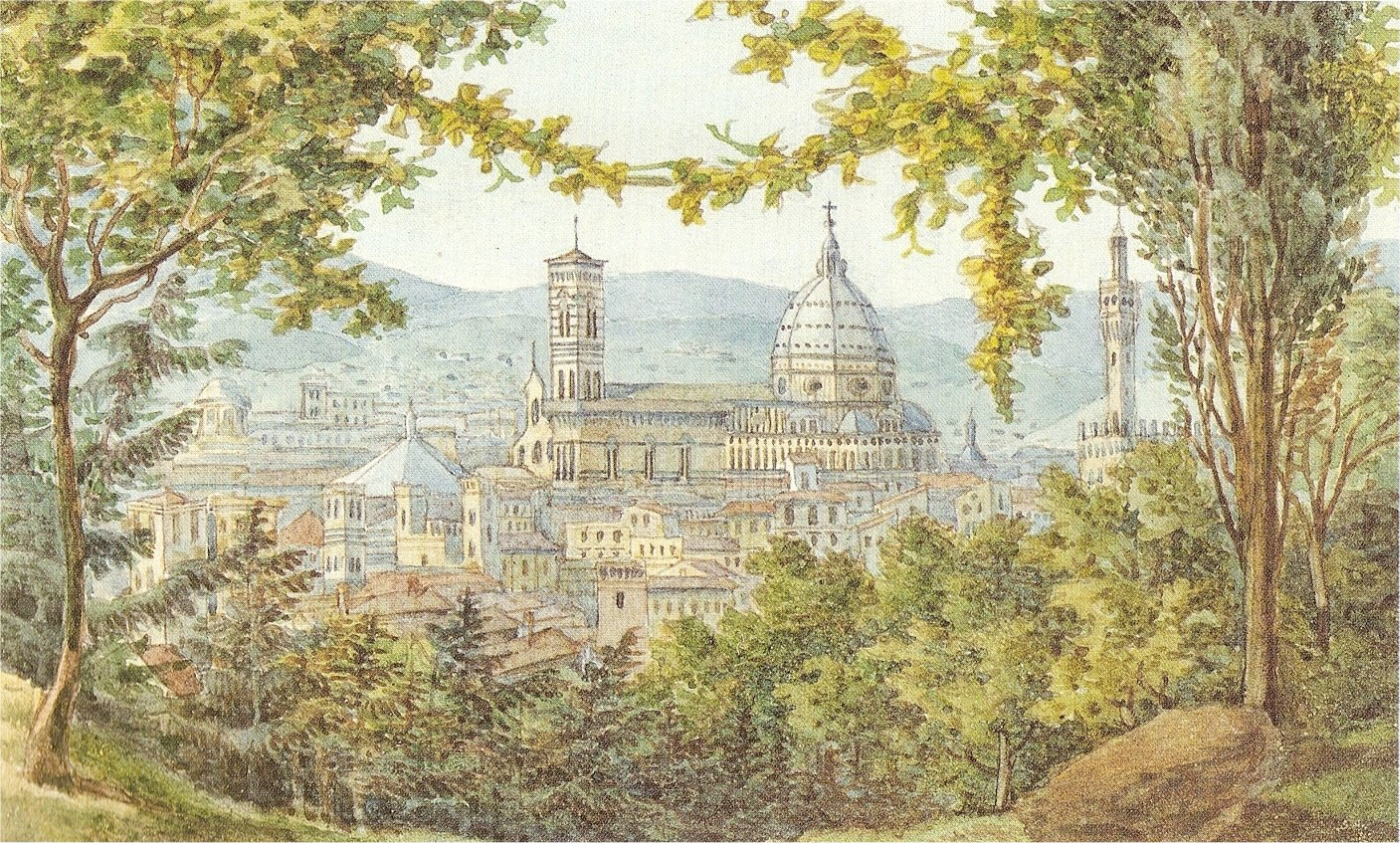
Florence
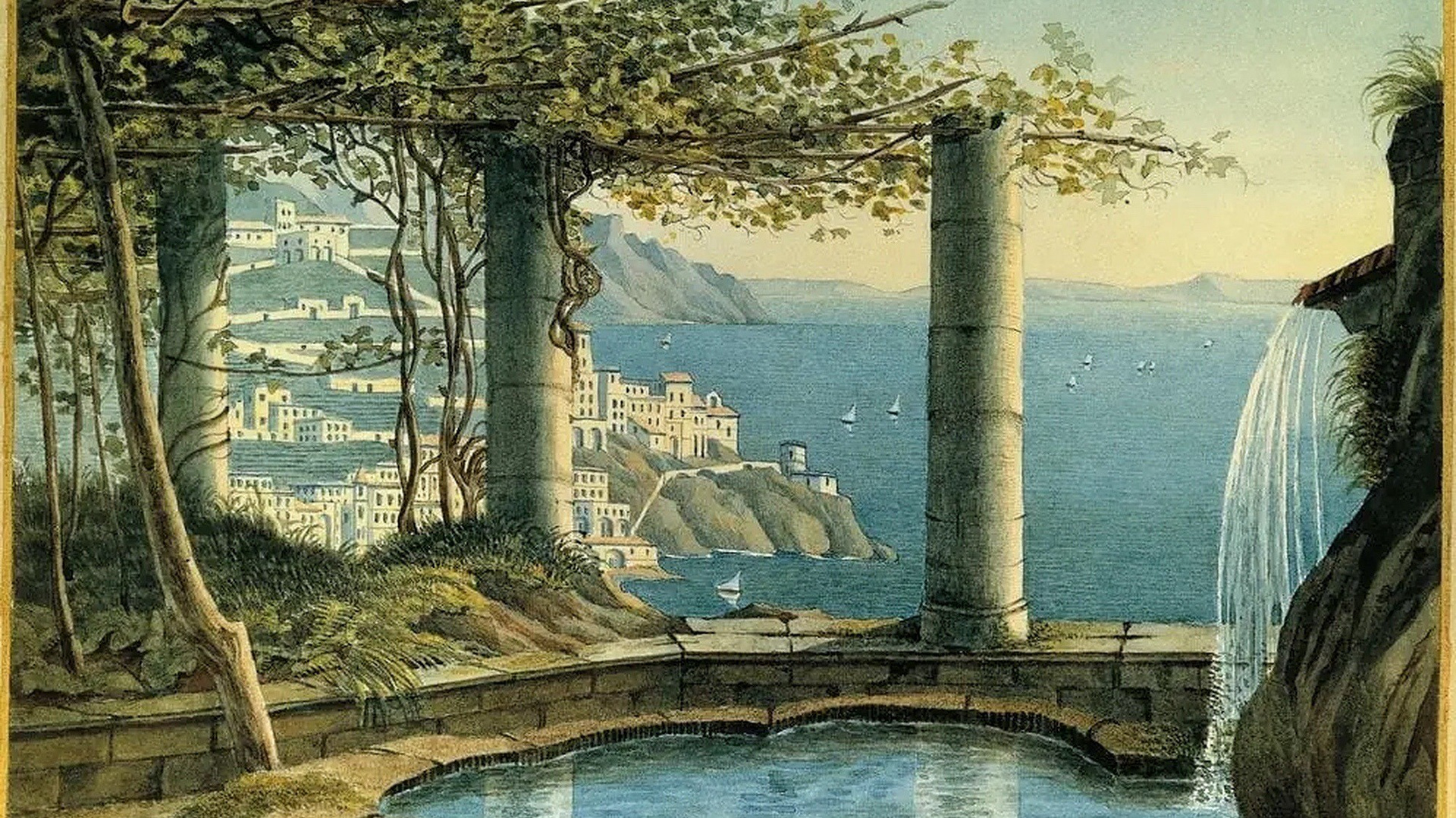
Amalfi Coast

The Cliffs at Amalfi, Sketch
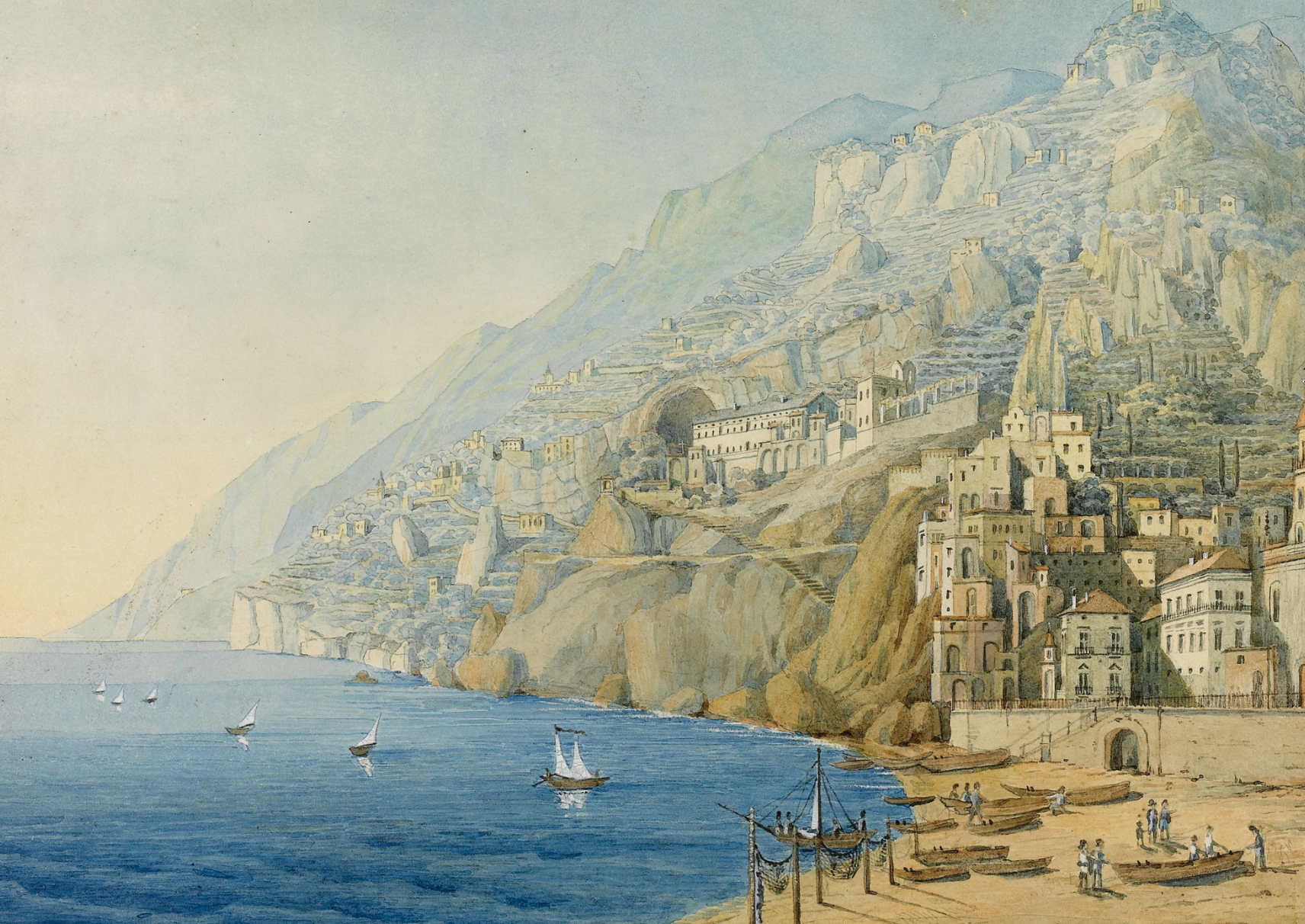
The Cliffs at Amalfi
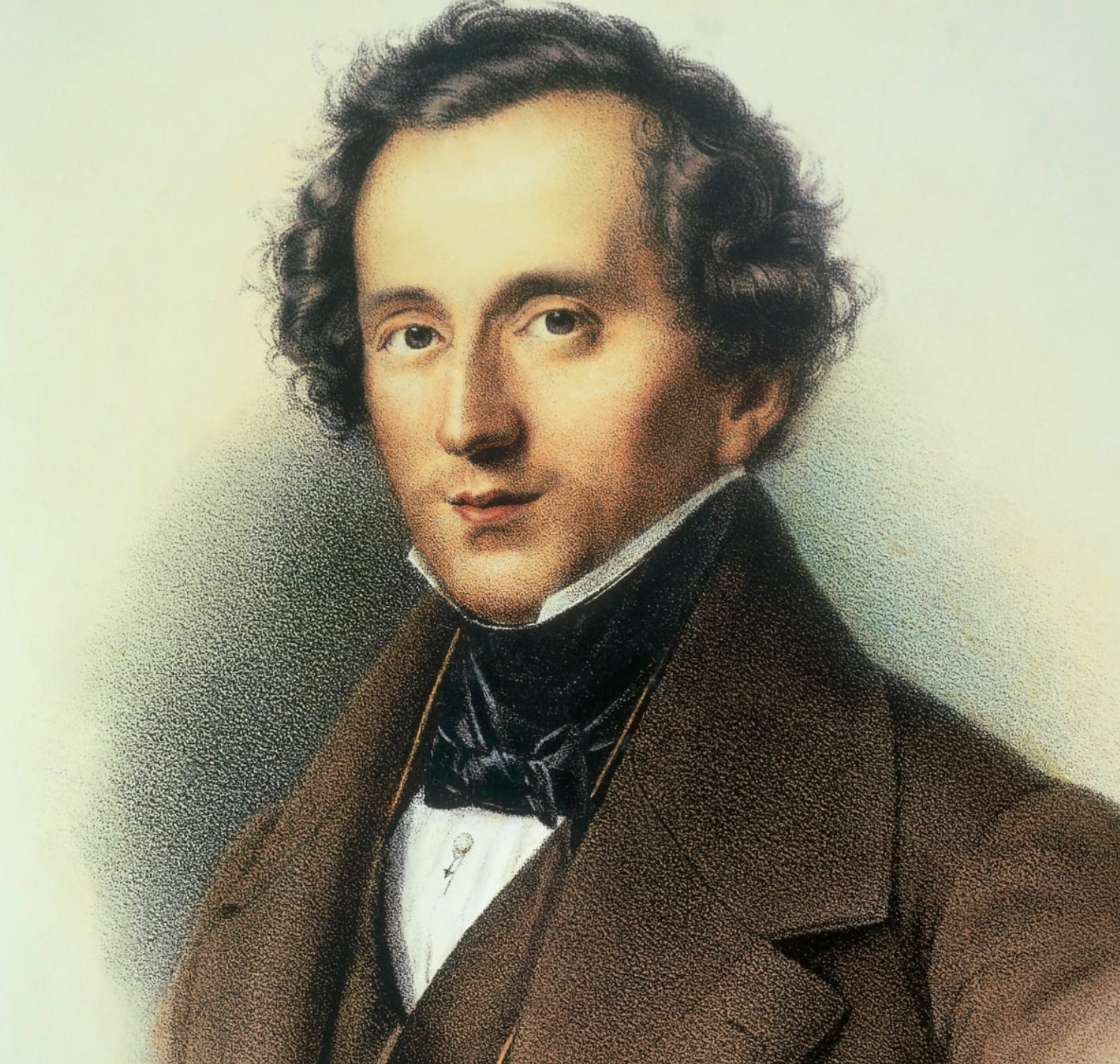
Felix Mendelssohn
Proceeds to support Stockport Amnesty Group
Amnesty International is a global movement of more than 10 million people who challenge injustice. We are campaigning for a world where human rights are enjoyed by all. Amnesty is funded by members and people like you. We are independent of any political ideology, economic interest or religion. No government is beyond scrutiny. No situation is beyond hope. Through Amnesty’s detailed research and determined campaigning, we help fight abuses of human rights worldwide: we bring torturers to justice; change oppressive laws; free people jailed just for voicing their opinion.
Local groups are at the heart of what we do; there are over 250 groups throughout the United Kingdom. We offer powerful support to campaigns, raise vital funds, and represent Amnesty in their local community. The Amnesty volunteers here tonight are from the Stockport Amnesty Group; we meet once a month in Cheadle Hulme.
Brigid Hemingway
Leader
Brigid Hemingway (Leader) started playing the violin aged 14. She is also founder and Leader of The Athenean Ensemble and former leader of The Gorton Philharmomic. She enjoys playing string quartets with her Athenean String Quartet with fellow Amaretti players. She taught mathematics at Cheadle Hulme School for many years and is now a private maths tutor. She is passionate about acting, having come to it rather late in life in 2015. She has since made up for lost time and will be appearing in her 12th play Bothered and Bewildered by Gail Young with Heald Green Theatre from 5th to 9th April. (Tickets available from box office on 0161 436 5000 or https://www.ticketsource.co.uk/hgtctheatre?sd=1 )
John Phillips
Leader
John Phillips began studying the violin at the age of 10 and later became a member of the National Youth Orchestra. He read Classics at Fitzwilliam College, Cambridge, where he was a founder member of the Fitzwilliam String Quartet. The quartet subsequently became String Quartet in Residence at the University of York and, whilst there, gave the UK premiere of the Thirteenth Quartet of Shostakovich in the presence of the composer. He has had a special interest in his music ever since.
He later left the quartet to pursue a career in law, supporting his legal studies by freelance playing with the Royal Philharmonic Orchestra, the Philharmonia Orchestra and the London Mozart Players.
He left the law in 2016 to return to music and in 2020 completed the degree of Master of Music in Performance at the Royal Northern College of Music. He is a director and member of the Board of the Hallé Orchestra.
